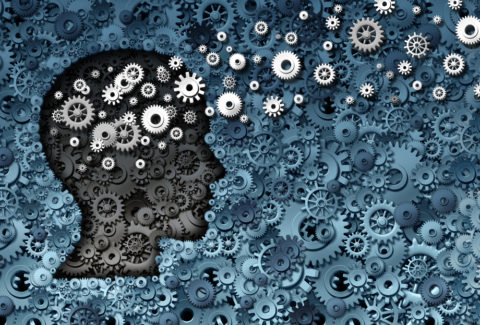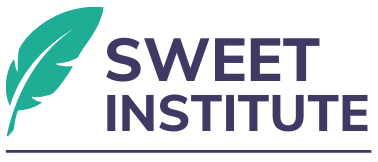Decisional Balance and Behavioral Change and Motivation
Decisional balance[1] is a crucial concept in understanding behavior change and motivation, particularly within the context of health and wellness. It refers to the process individuals go through when weighing the pros and cons of changing a particular behavior. This article explores the principles of decisional balance, its role in motivating behavior change, and practical applications for mental health clinicians and practitioners.
What is Decisional Balance?
Decisional balance is rooted in the Transtheoretical Model (TTM) of behavior change[2], developed by Prochaska and DiClemente. This model posits that individuals move through a series of stages as they consider and implement behavior change. Decisional balance specifically addresses the cognitive process of evaluating the advantages and disadvantages of changing versus maintaining the status quo.
The decisional balance model consists of two main components:
- Pros: The perceived benefits or positive outcomes associated with changing a behavior. These may include improved health, enhanced quality of life, increased social support, and greater self-efficacy.
- Cons: The perceived drawbacks or negative outcomes associated with changing a behavior. These can include fear of failure, potential discomfort during the change process, loss of familiar routines, or concerns about the effort required to change.
The interplay between these pros and cons influences an individual’s readiness to change and their overall motivation to take action.[3]
The Role of Decisional Balance in Behavior Change
Decisional balance plays a vital role in shaping an individual’s motivation to change. Here are some key ways it influences behavior change:
- Awareness of Ambivalence: Many individuals experience ambivalence when considering behavior change. By explicitly examining both the pros and cons, individuals can gain a clearer understanding of their feelings toward the behavior in question. This awareness is essential for moving from contemplation to preparation for change.[4]
- Enhancing Motivation: When the pros outweigh the cons, individuals are more likely to feel motivated to change. Clinicians can help clients articulate and amplify the benefits of change, thereby enhancing their motivation and commitment to the process.[5]
- Addressing Concerns: Understanding the cons of changing a behavior allows clinicians to address specific concerns and barriers. By validating clients’ fears and exploring strategies to mitigate them, practitioners can empower individuals to move forward in their change journey.
- Fostering Decision-Making: Decisional balance facilitates informed decision-making. By weighing the pros and cons, individuals can make choices that align with their values and goals, leading to more sustainable behavior changes.[6]
Practical Applications of Decisional Balance
Clinicians and practitioners can effectively utilize the concept of decisional balance in their work with clients through several strategies:
- Conducting a Decisional Balance Exercise: Encourage clients to create a list of pros and cons related to their behavior change. This exercise can help clients visualize their thoughts and feelings, providing a foundation for discussion and exploration.
- Using Motivational Interviewing Techniques: Employ motivational interviewing strategies to elicit and reinforce the pros of change while exploring the cons. By facilitating open dialogue, practitioners can help clients navigate their ambivalence and strengthen their motivation to change.
- Encouraging Reflection: Ask clients to reflect on their past experiences with change and identify what motivated them to act. This reflection can reinforce their awareness of the factors that contribute to successful behavior change.
- Setting SMART Goals: Assist clients in setting SMART (Specific, Measurable, Achievable, Relevant, Time-bound) goals that align with the pros they have identified. This approach helps clients create actionable plans for change while maintaining a focus on the benefits.[7]
- Revisiting Decisional Balance Regularly: Encourage clients to revisit their decisional balance as they progress through the behavior change process. This ongoing evaluation allows individuals to adapt their strategies and maintain motivation over time.
Conclusion
Decisional balance is a powerful framework for understanding the motivation behind behavior change. By examining the pros and cons associated with changing behaviors, individuals can gain clarity, enhance motivation, and navigate the challenges of the change process. For mental health clinicians and practitioners, incorporating decisional balance into their approach can foster a deeper understanding of clients’ motivations and empower them to take meaningful action toward positive change. Ultimately, leveraging this concept can lead to more effective interventions and lasting behavioral transformations.
[1] Miller, William R., and Gary S. Rose. “Motivational interviewing and decisional balance: contrasting responses to client ambivalence.” Behavioural and cognitive psychotherapy 43.2 (2015): 129-141.
[2] Guo, Boliang, et al. “Do the Transtheoretical Model processes of change, decisional balance and temptation predict stage movement? Evidence from smoking cessation in adolescents.” Addiction 104.5 (2009): 828-838.
[3] Kroll, Chantal, et al. “Evaluating the decisional balance construct of the Transtheoretical Model: are two dimensions of pros and cons really enough?.” International journal of public health 56 (2011): 97-105.
[4] D’Alesio, Mark, Thomas M. Kelly, and Antoine Douaihy. “Ambivalence, Decisional Balance, and Equipoise.” Motivational Interviewing: A Guide for Medical Trainees (2023): 62.
[5] Collins, Susan E., Kate B. Carey, and Jacqueline M. Otto. “A new decisional balance measure of motivation to change among at-risk college drinkers.” Psychology of Addictive Behaviors 23.3 (2009): 464.
[6] Rakowski, William, John P. Fulton, and Judith P. Feldman. “Women’s decision making about mammography: a replication of the relationship between stages of adoption and decisional balance.” Health Psychology 12.3 (1993): 209.
[7] Dacey, Marie. “Goal Setting and Planning.” Empowering Behavior Change in Patients. CRC Press 121-132.







